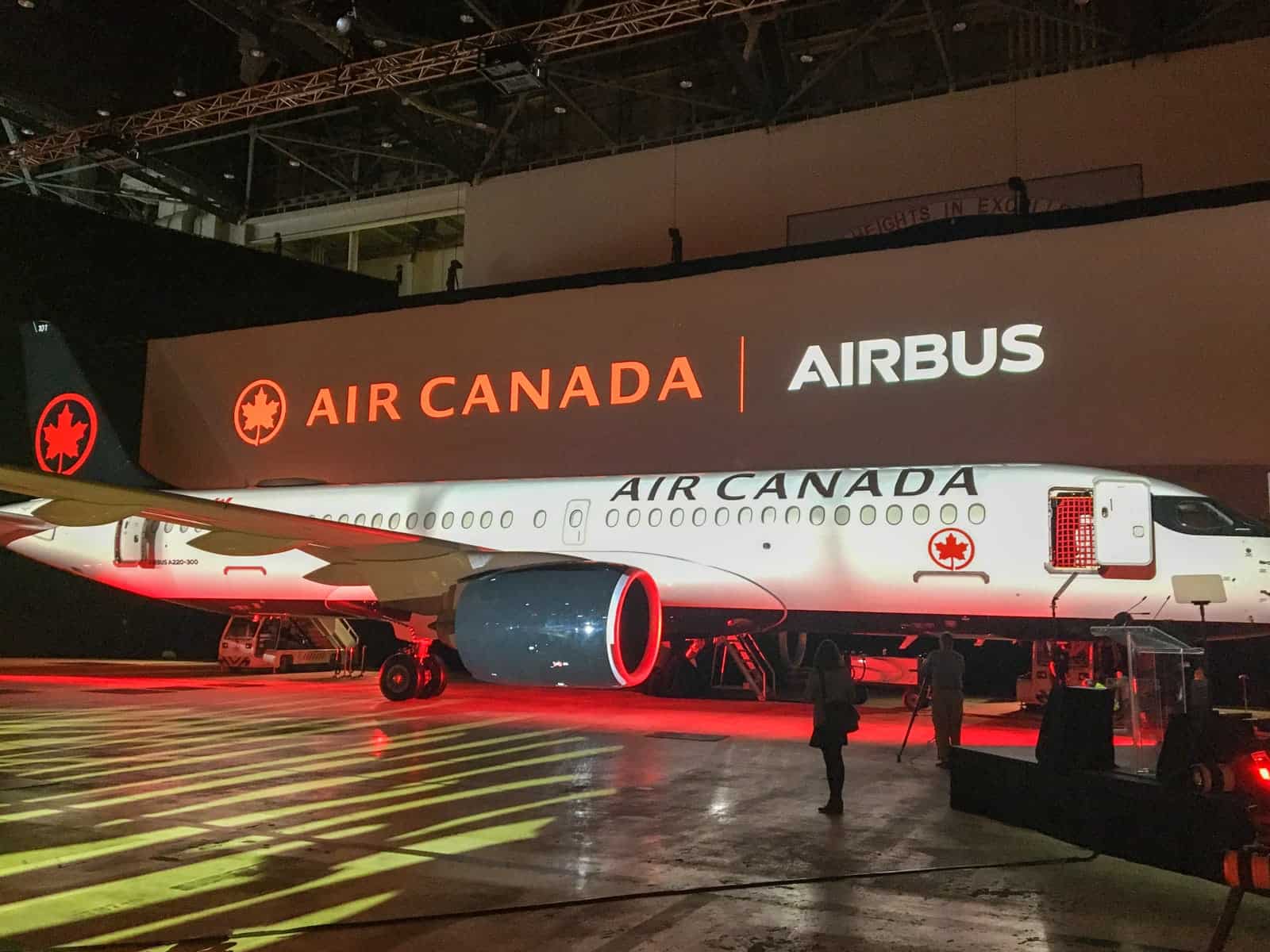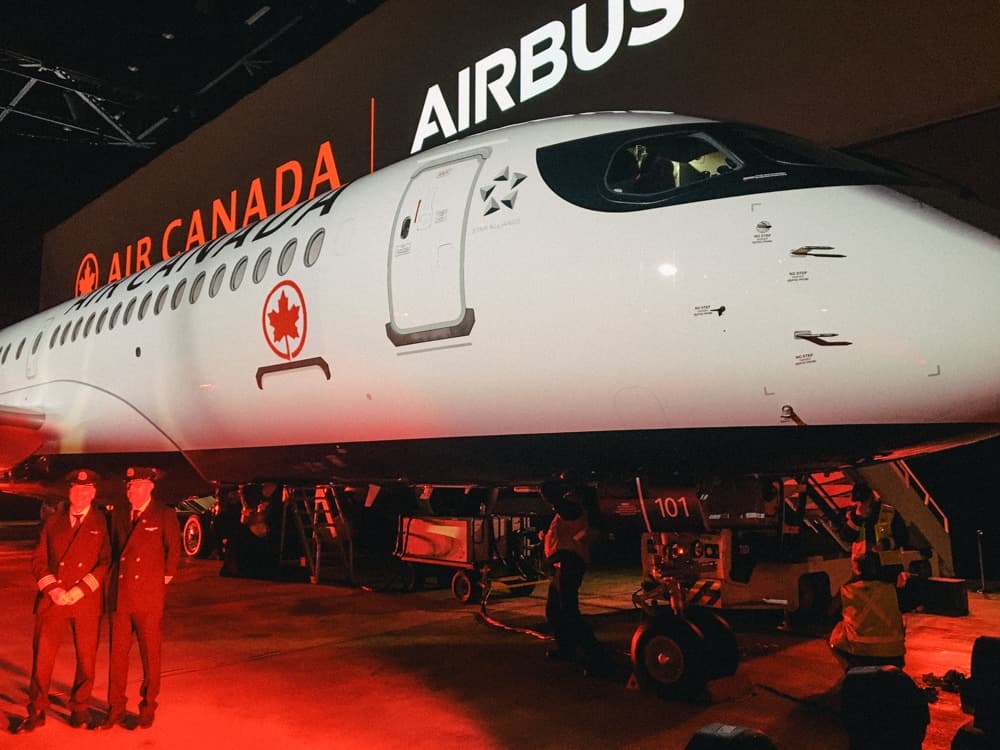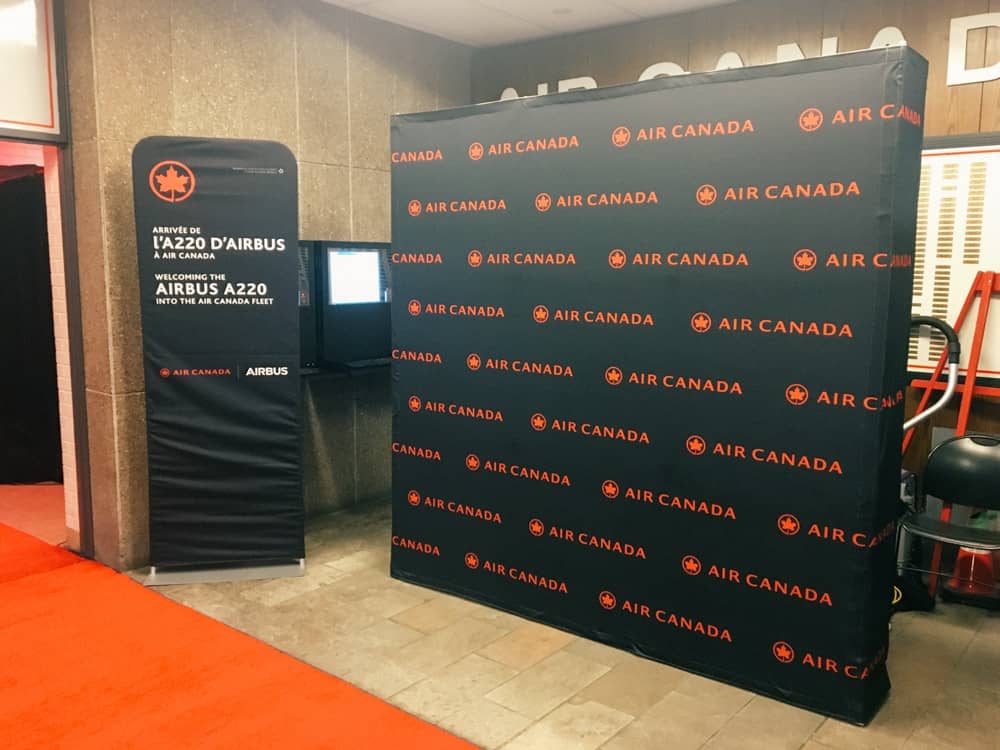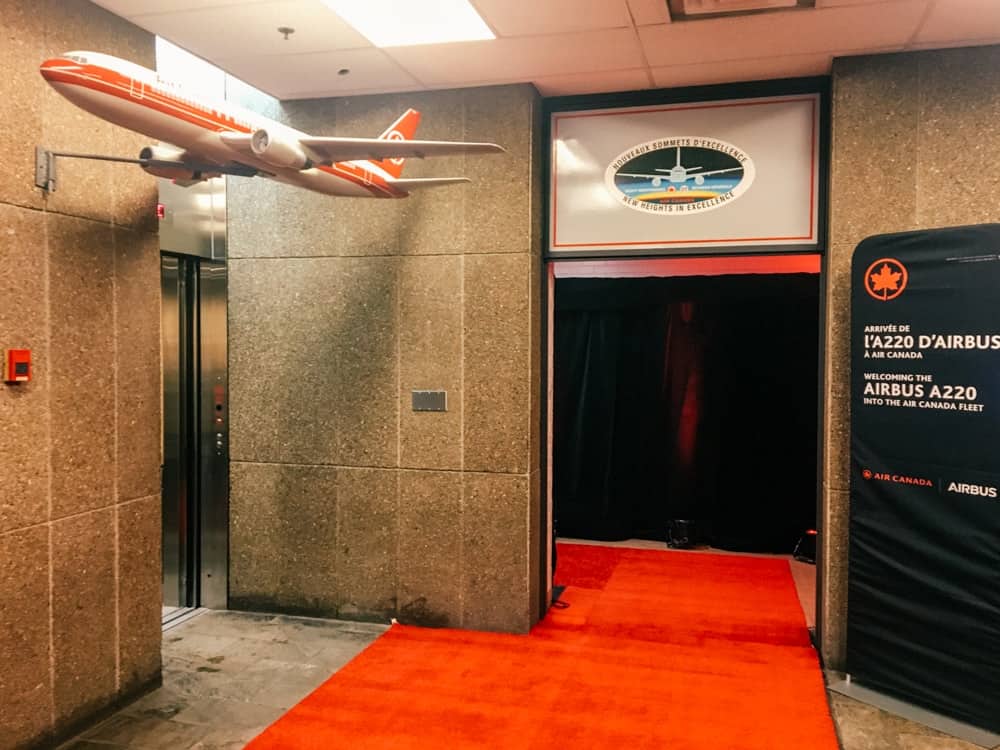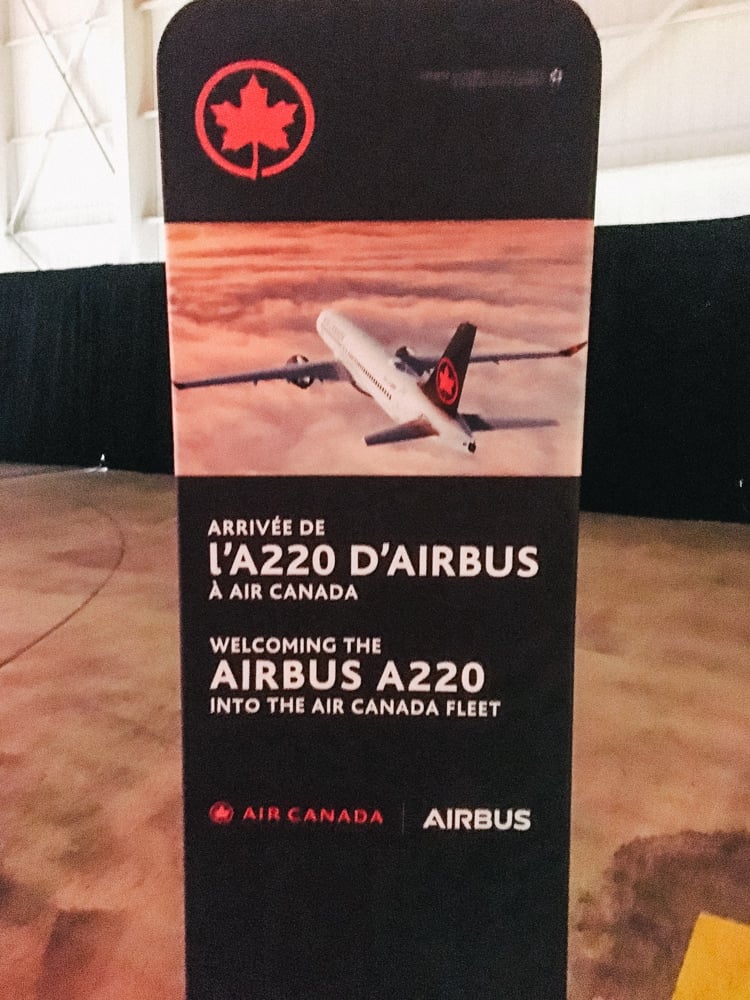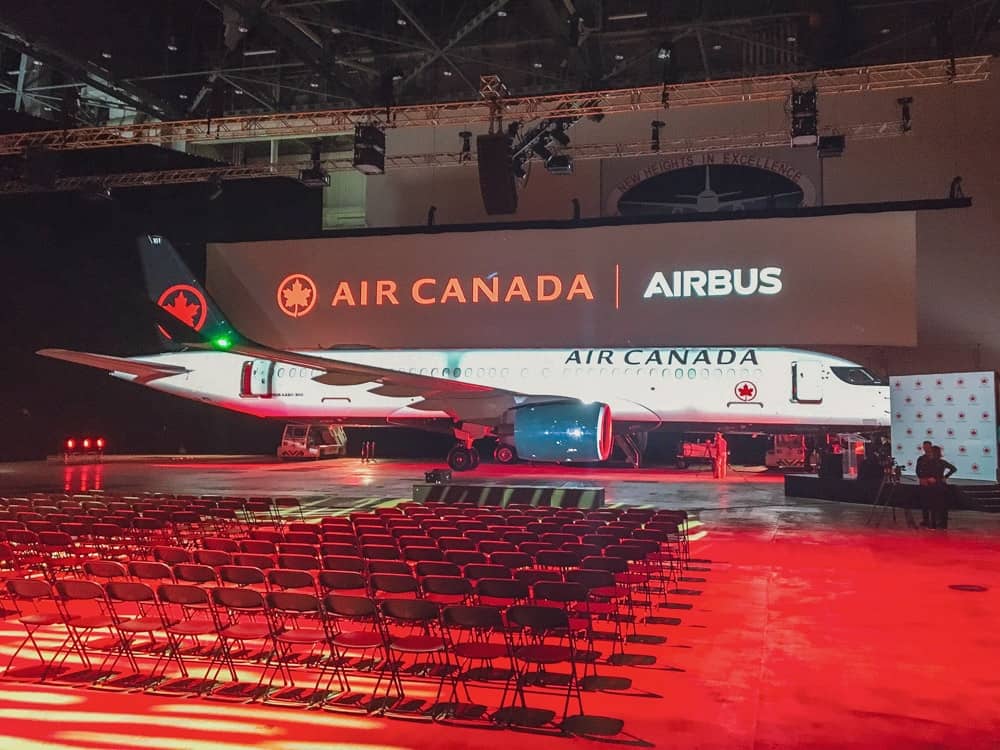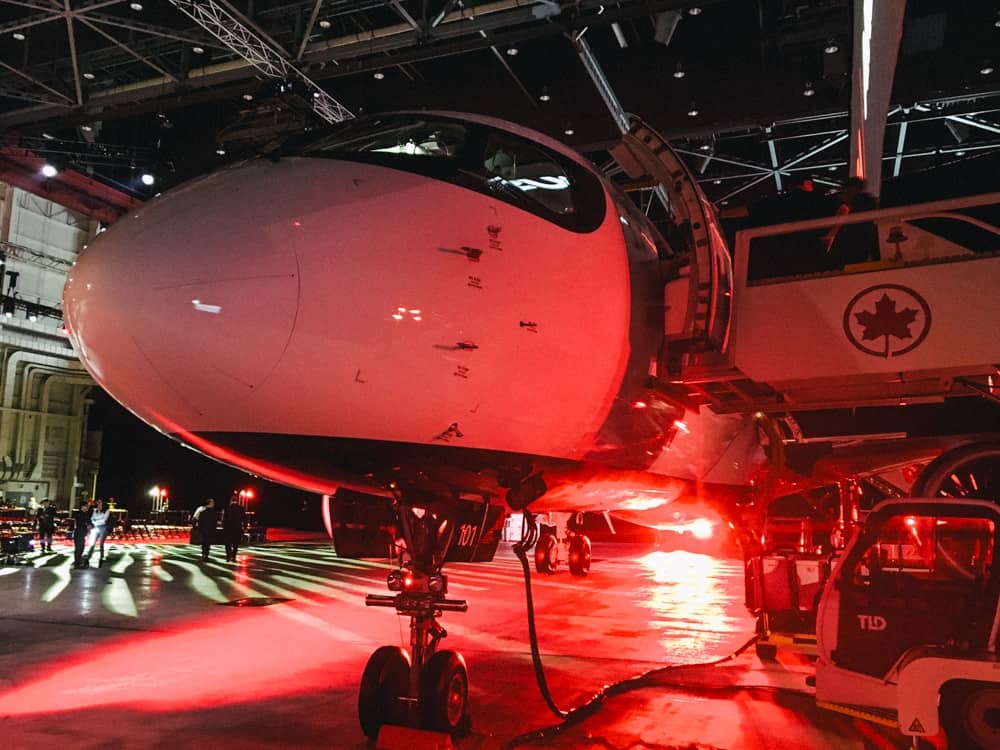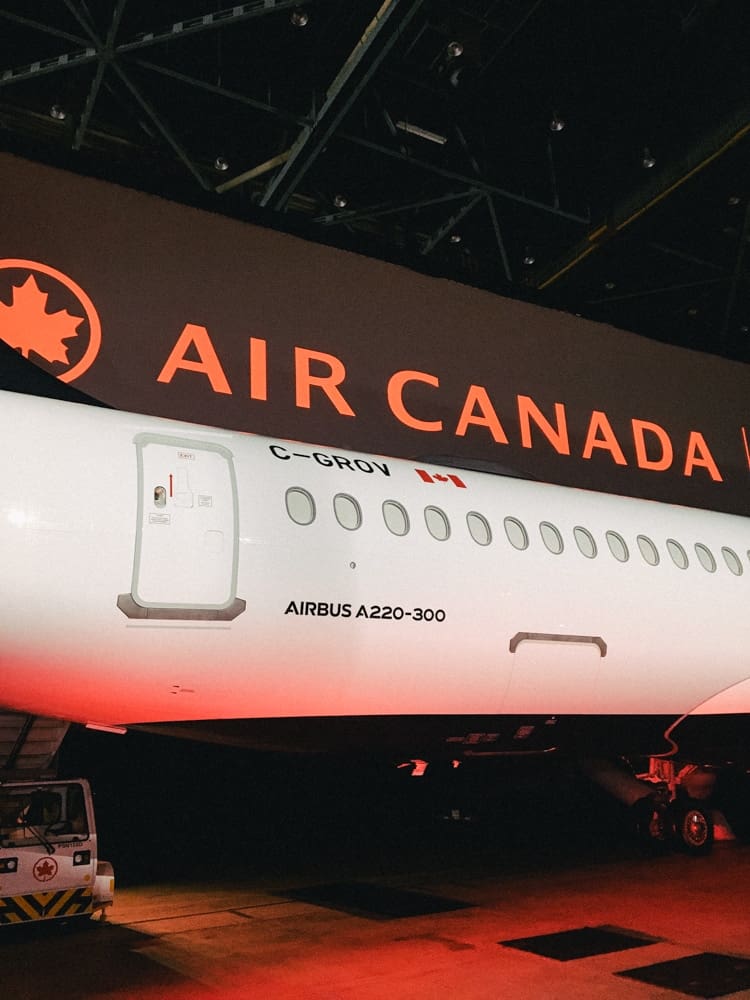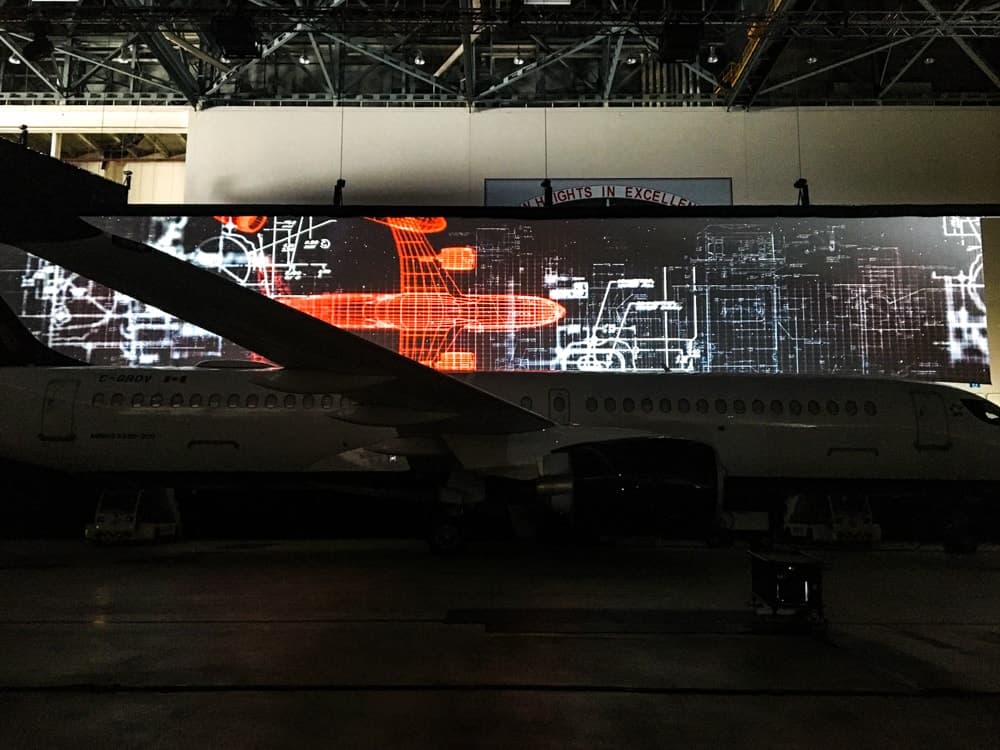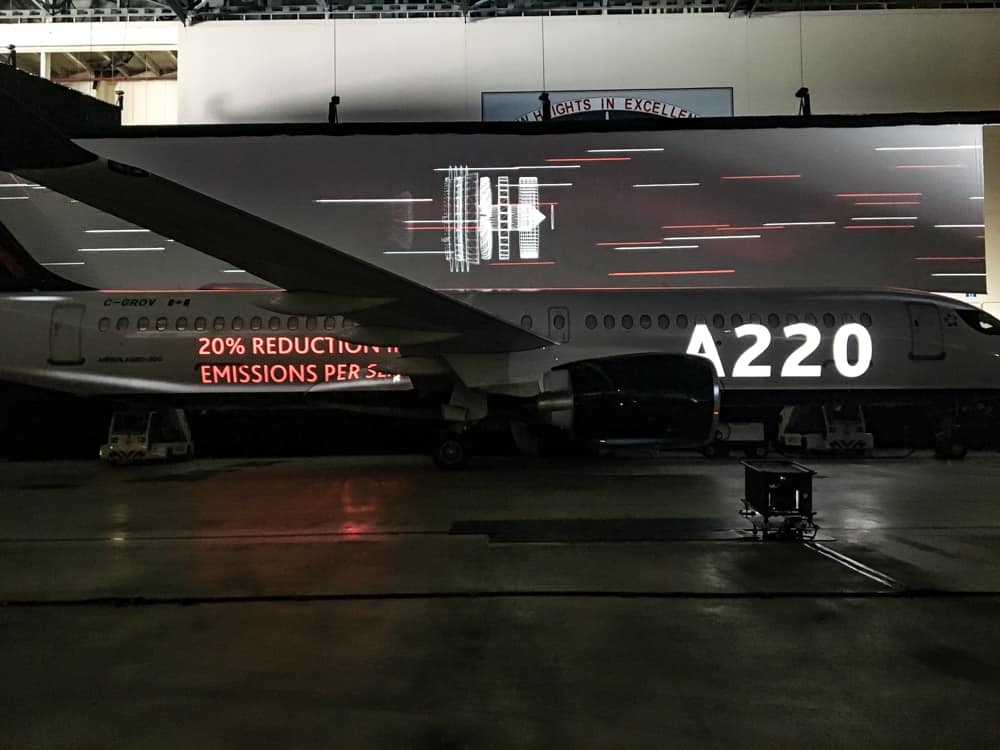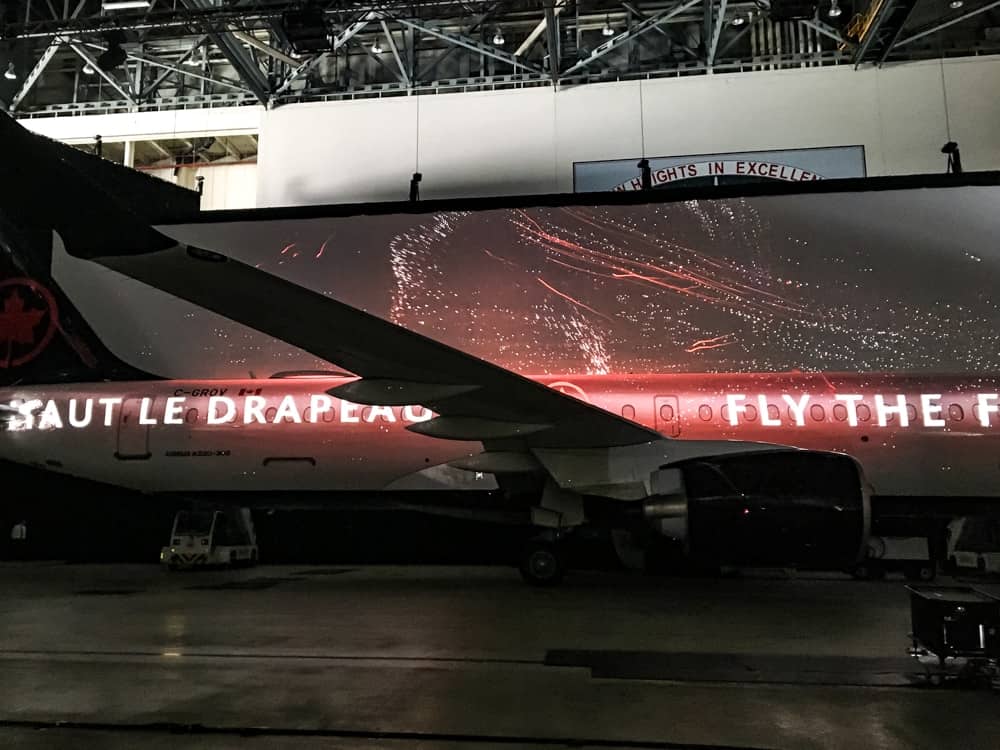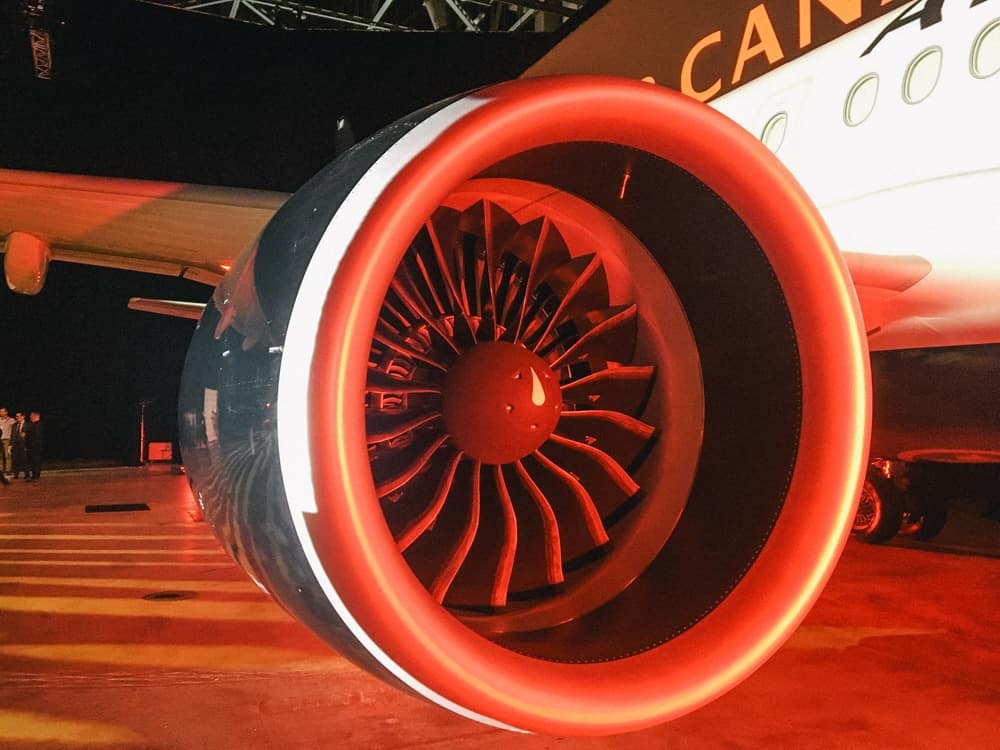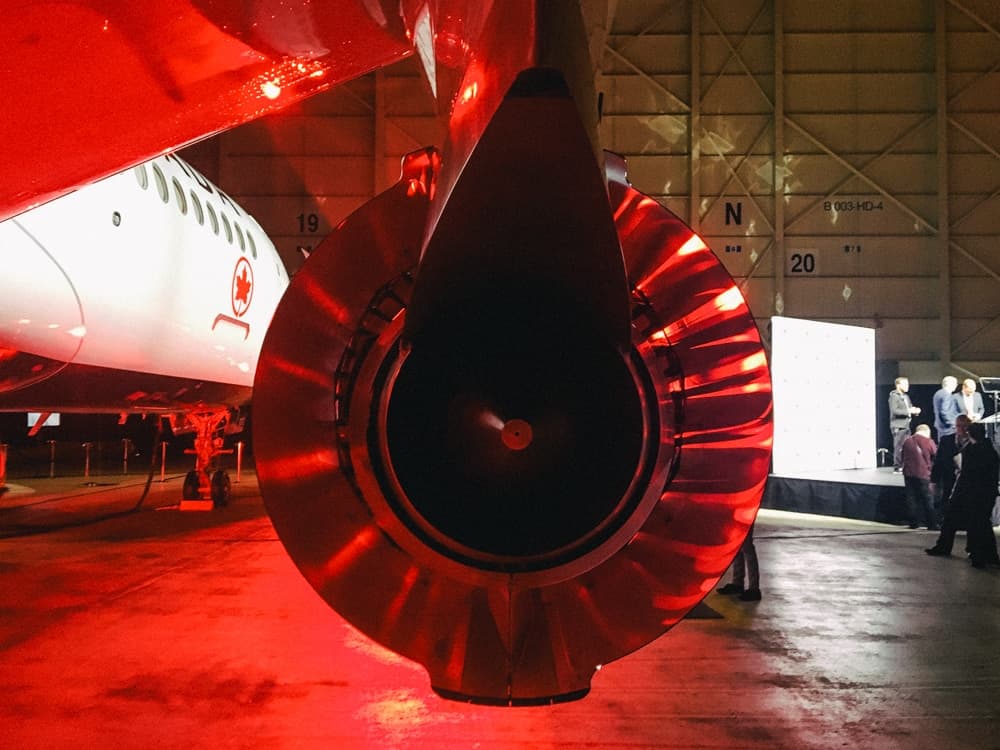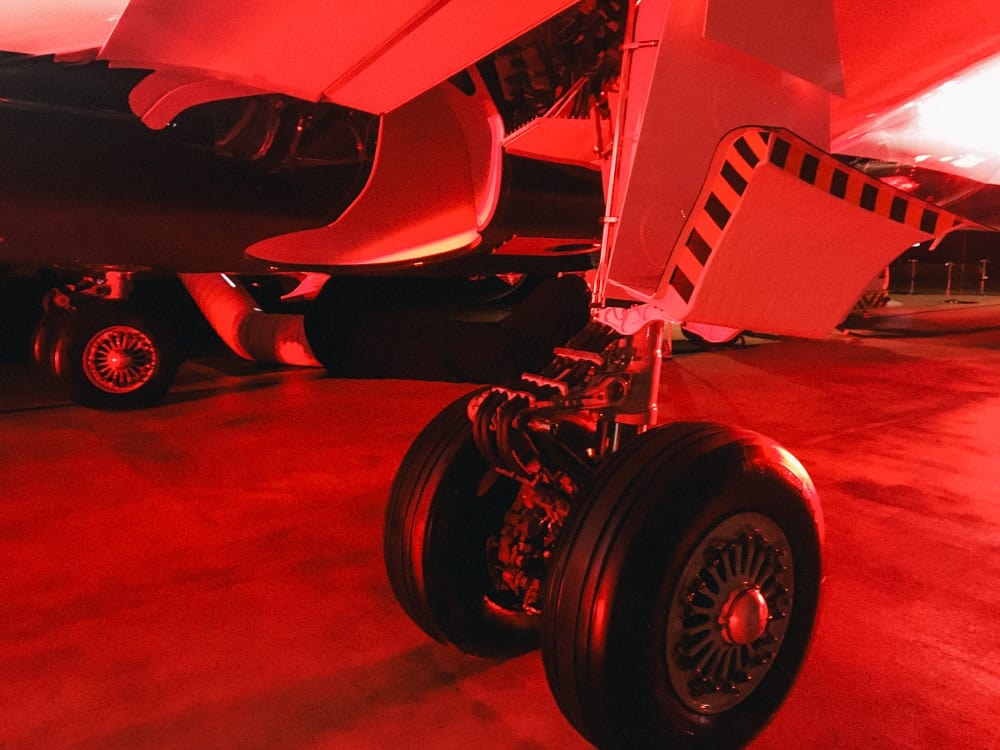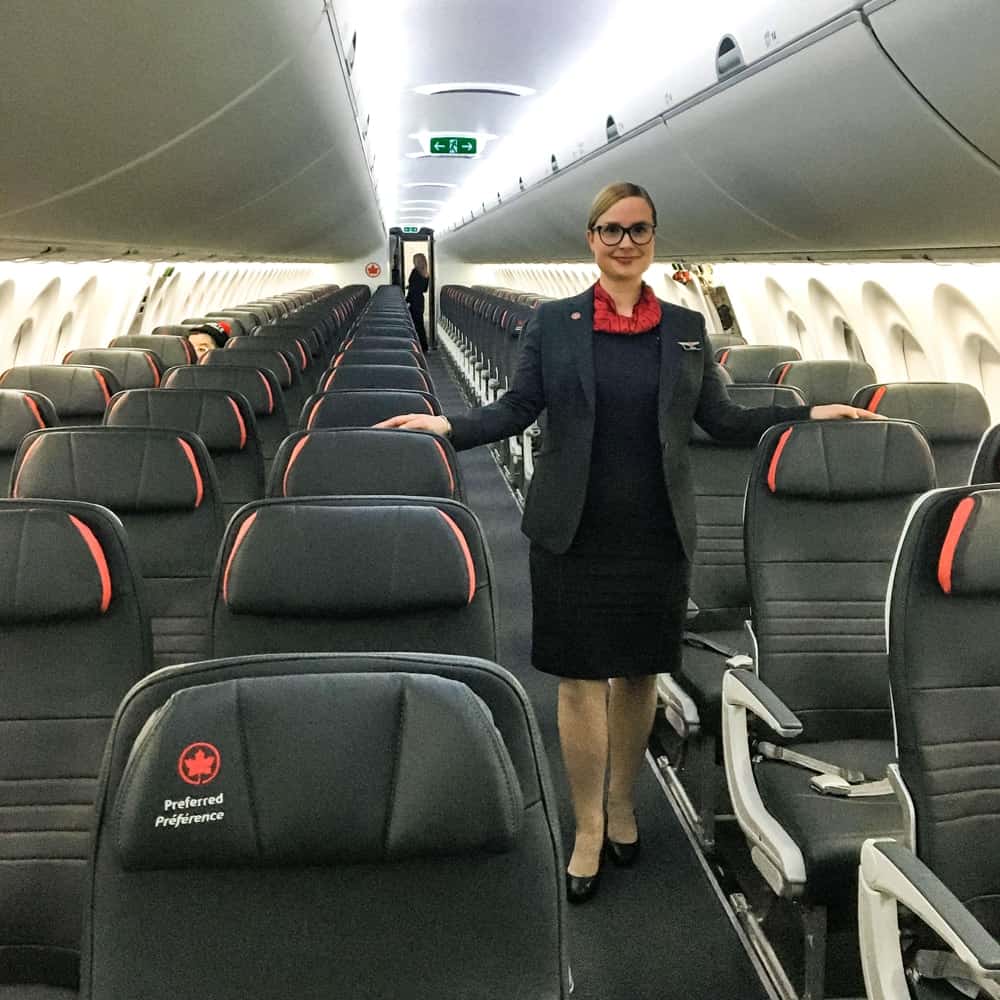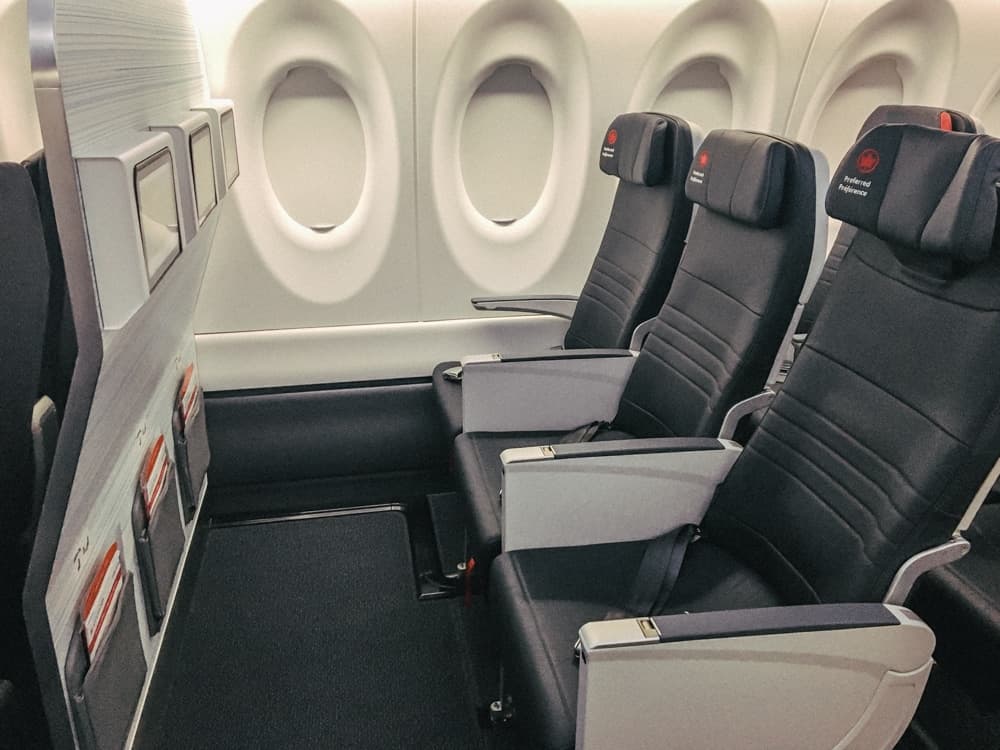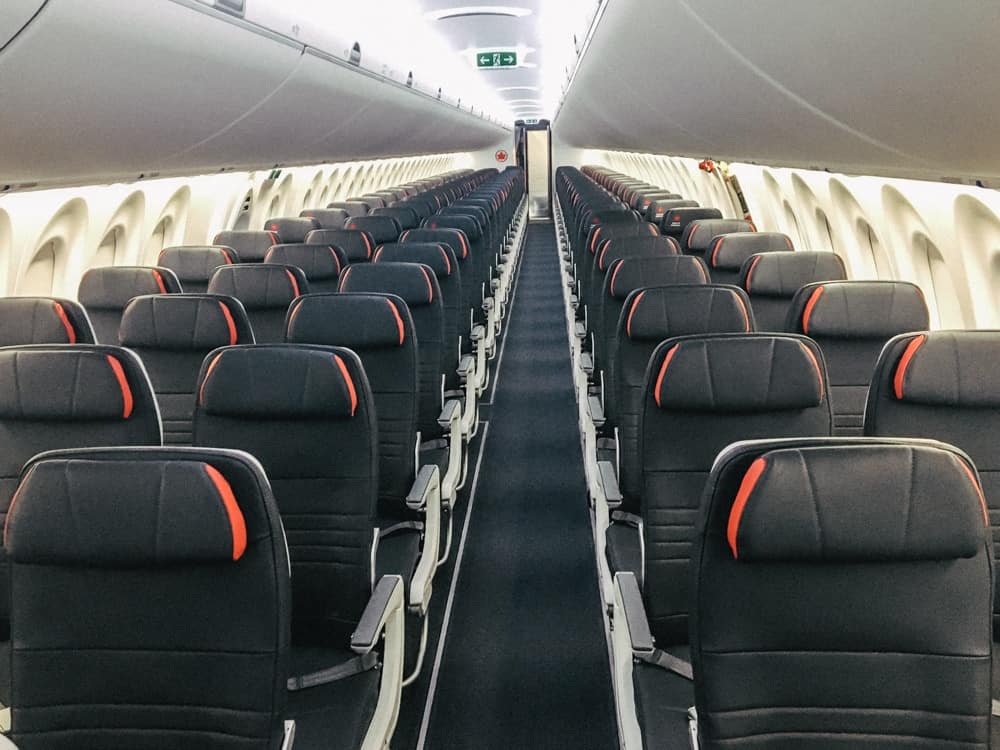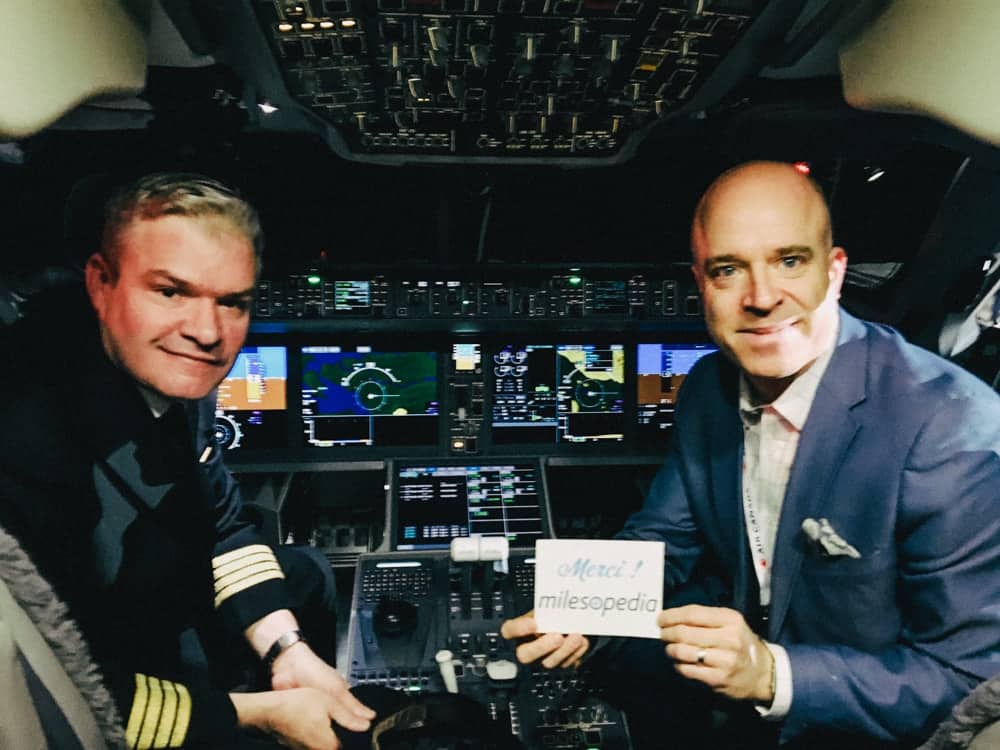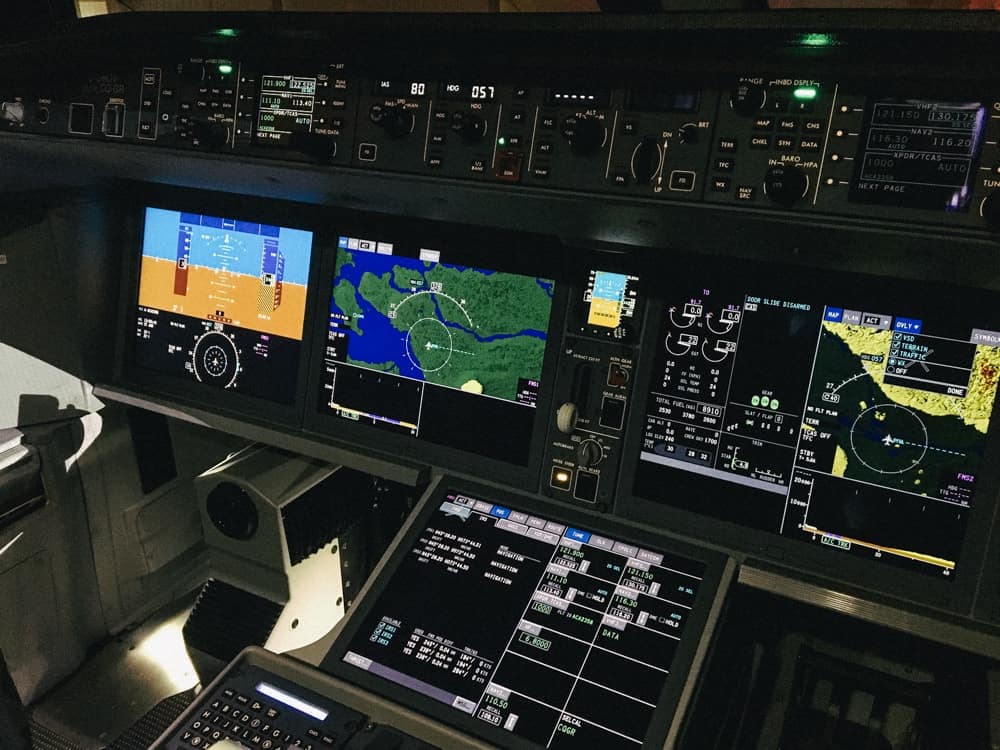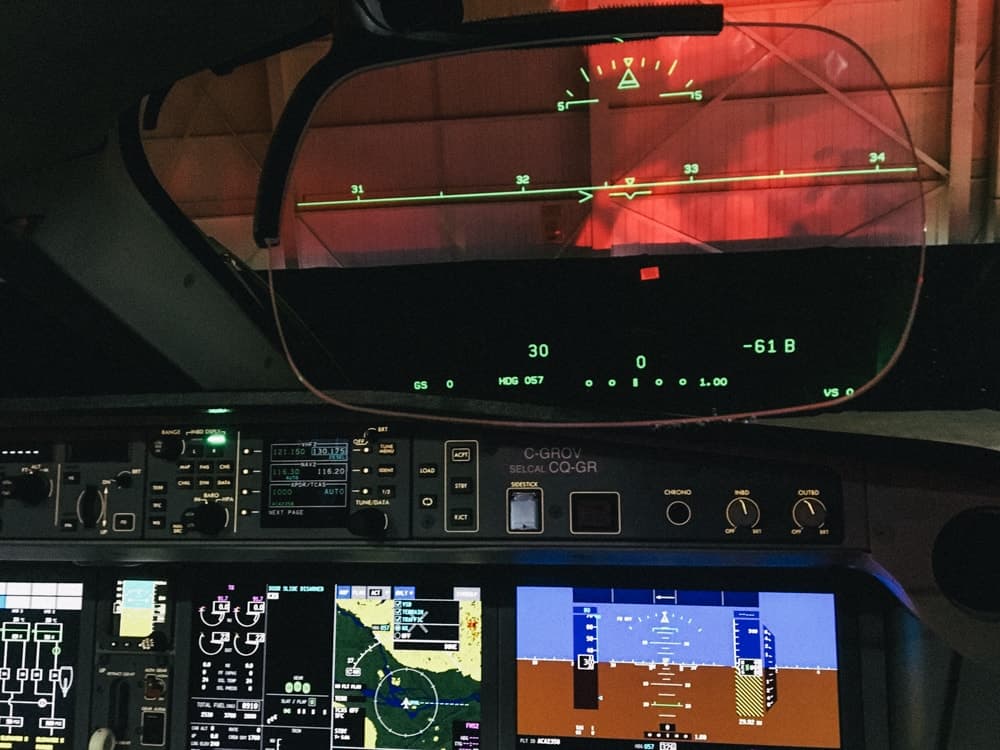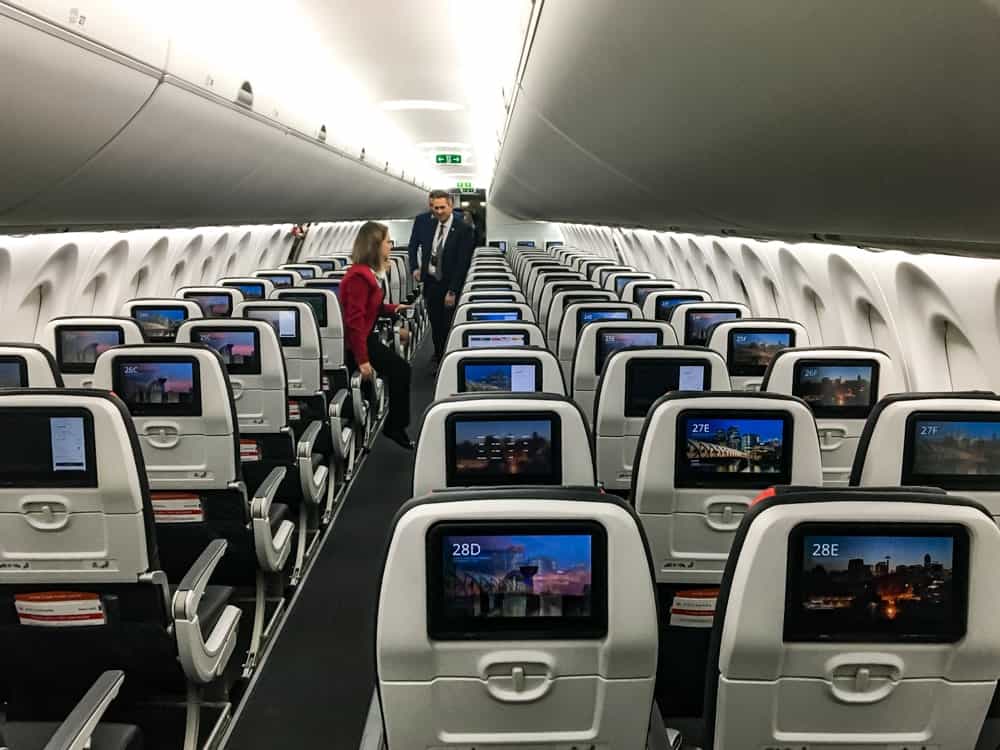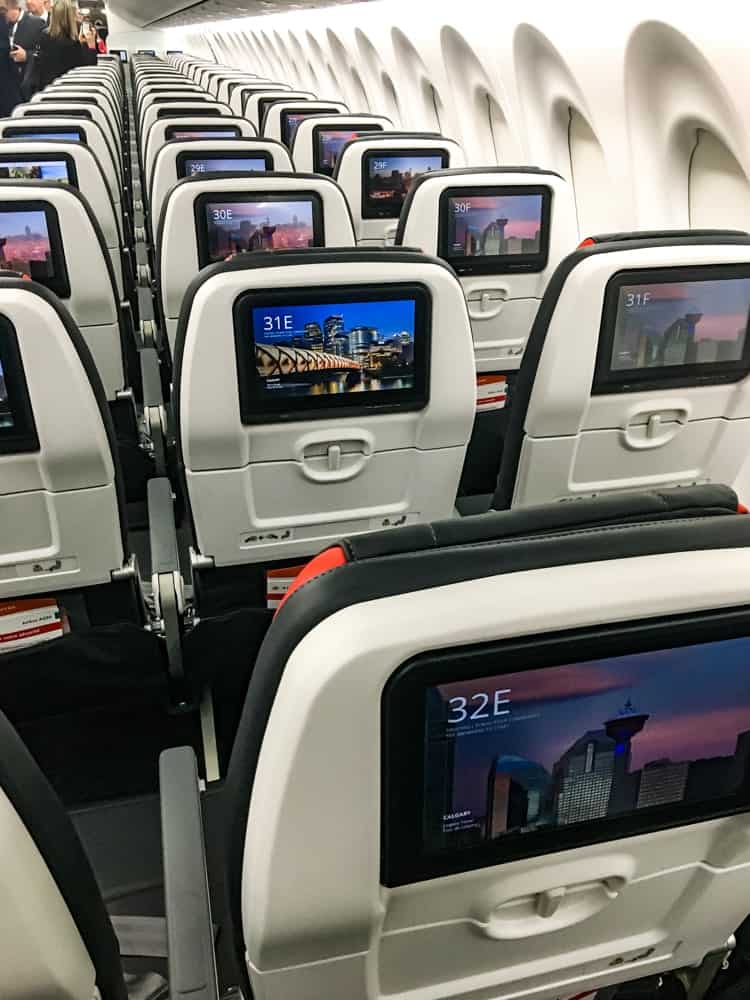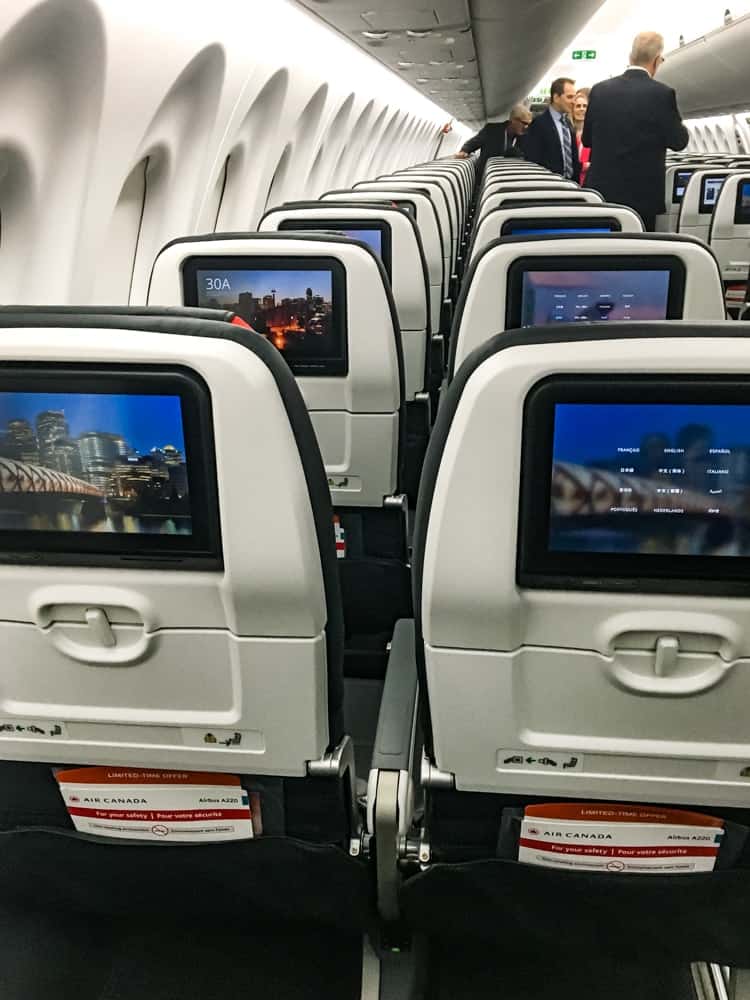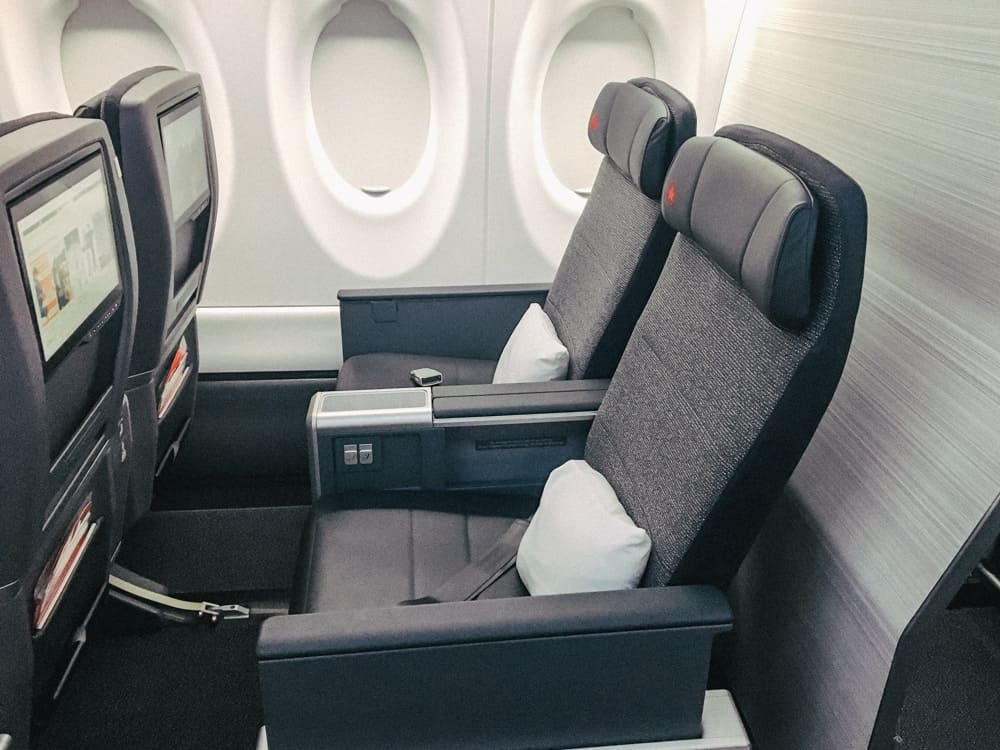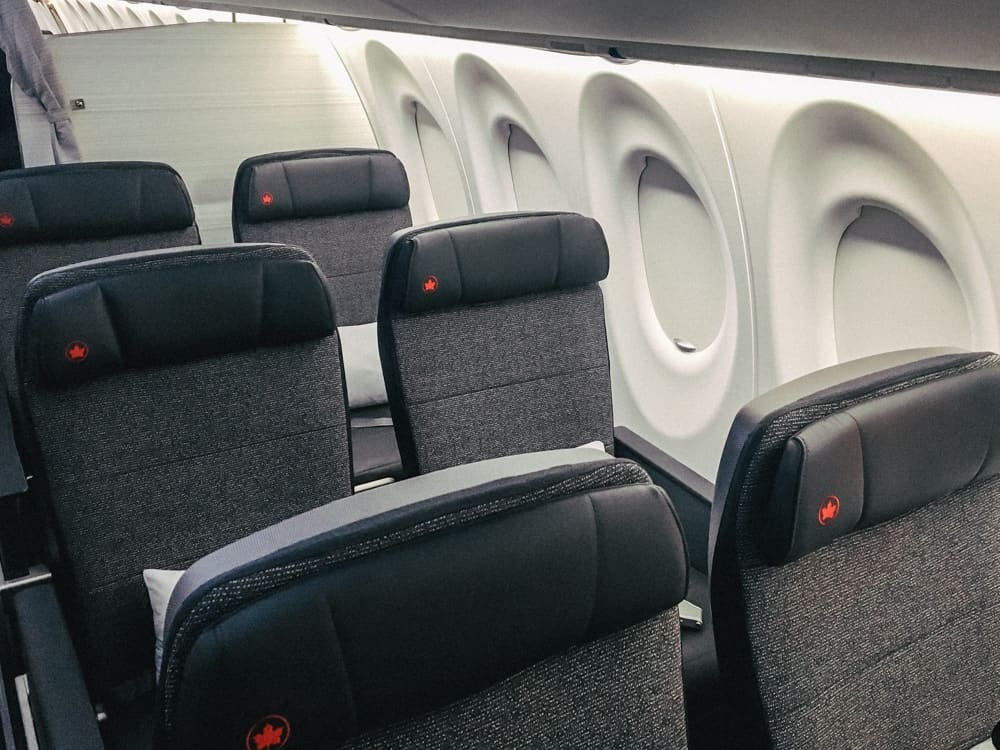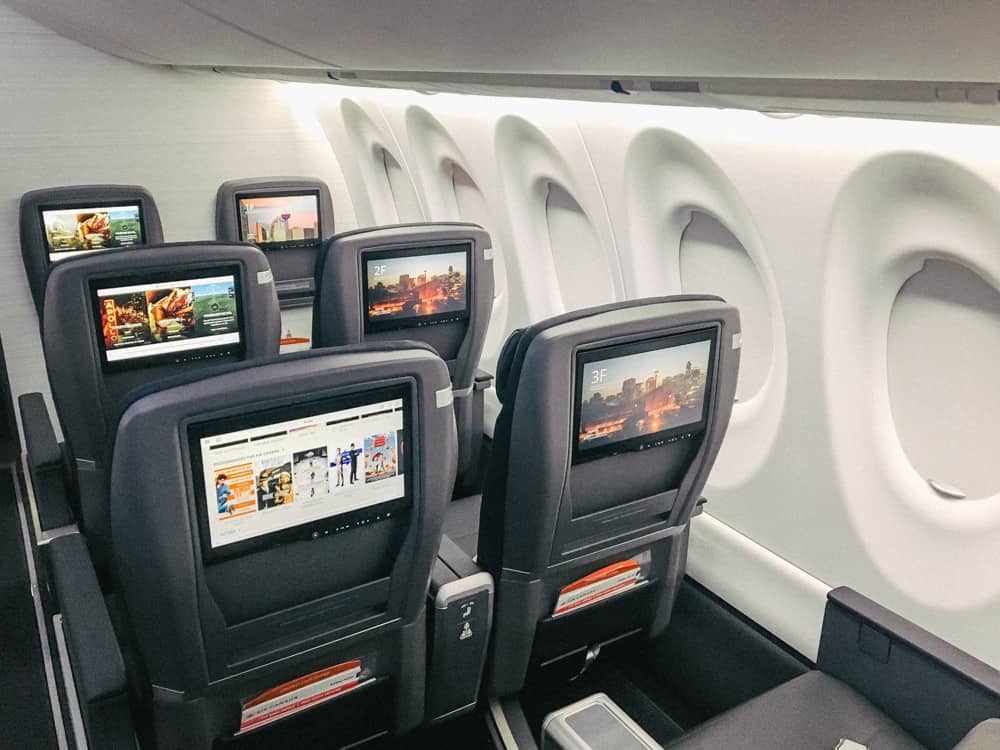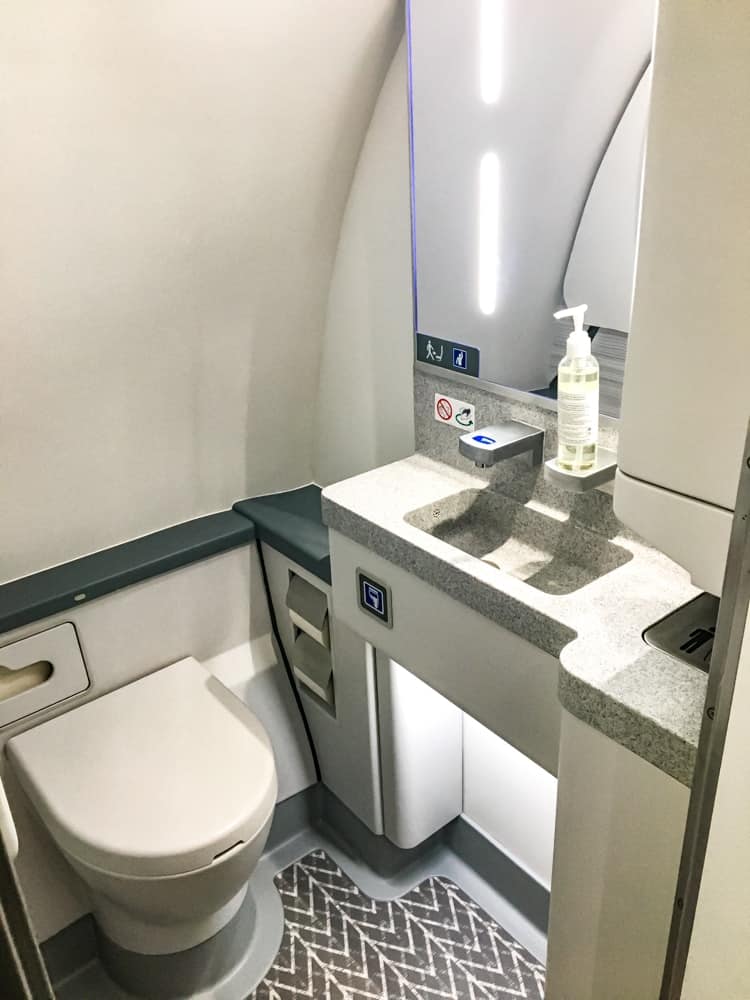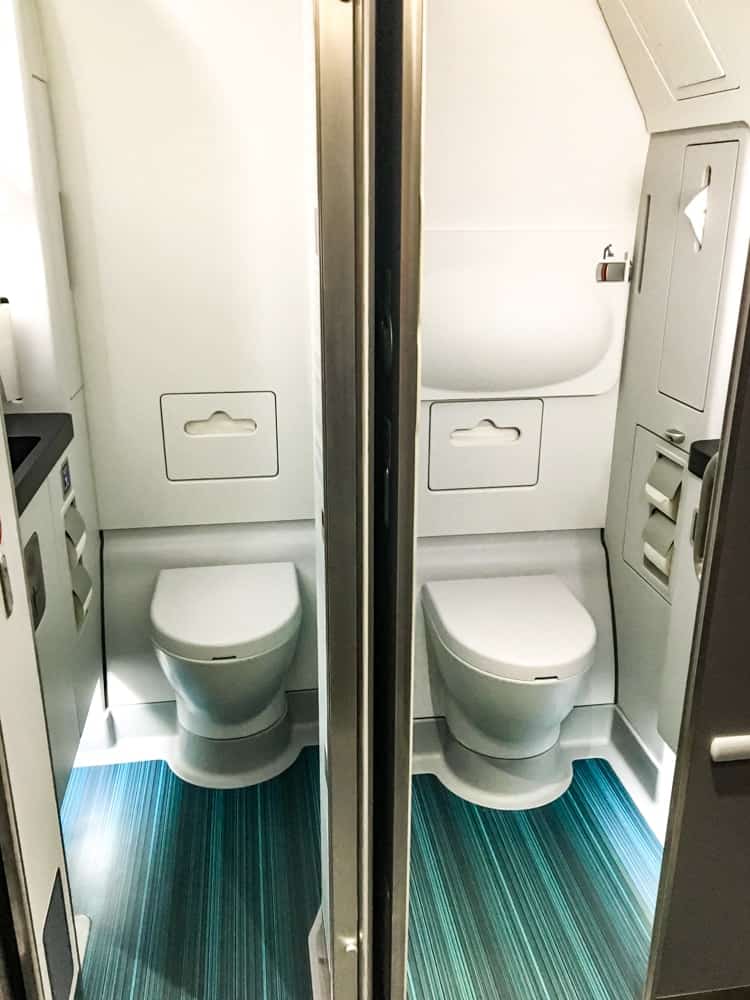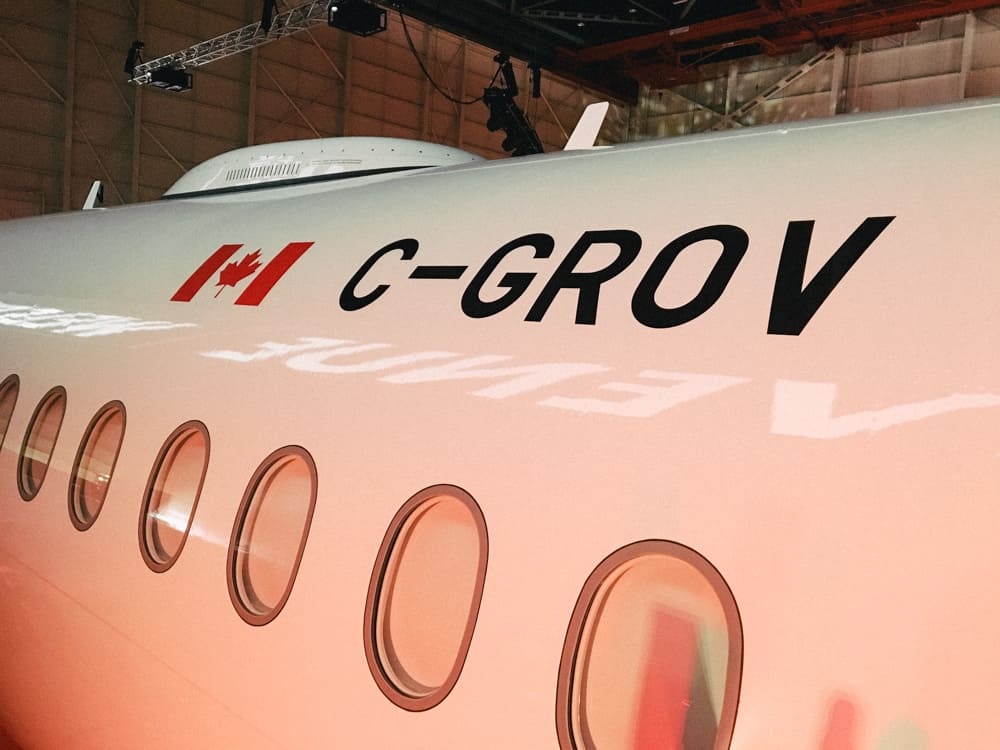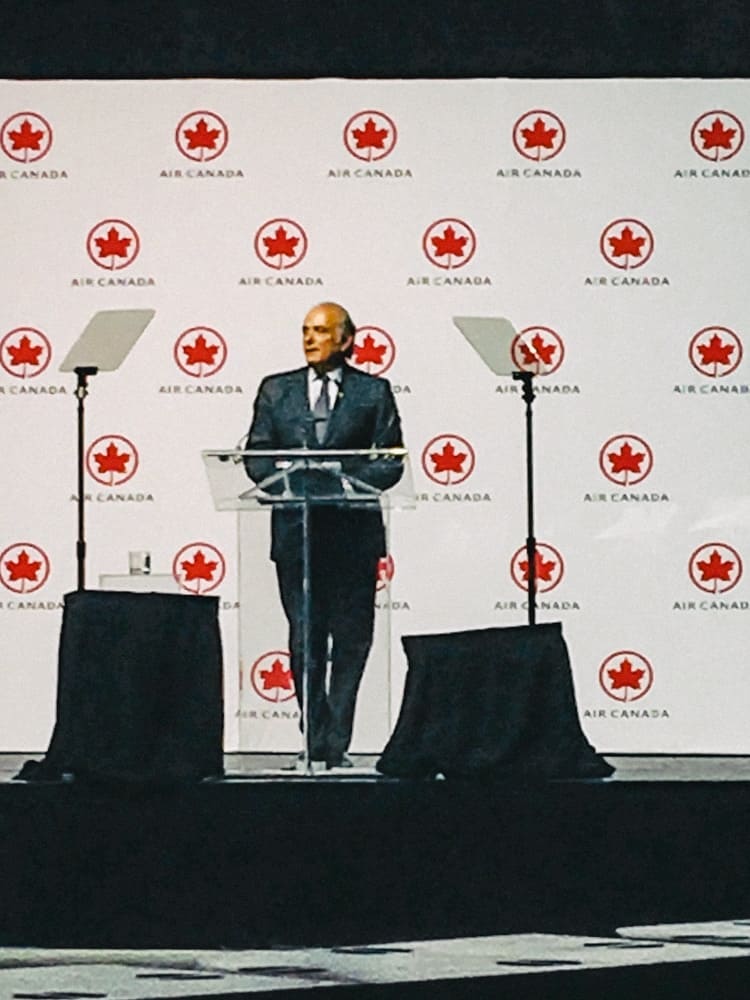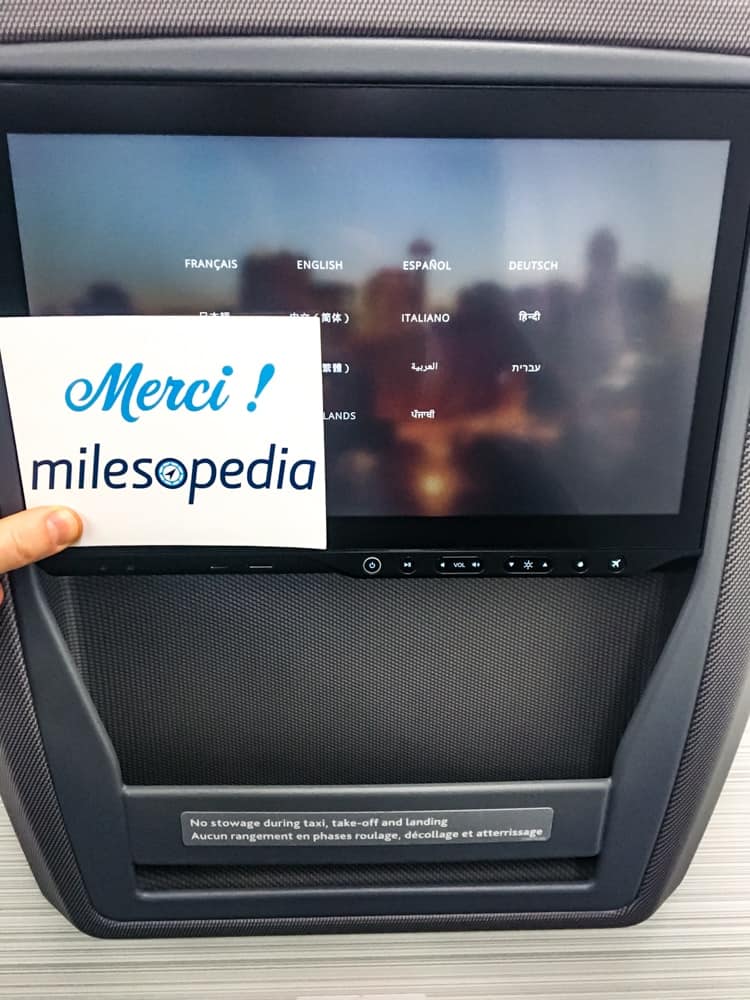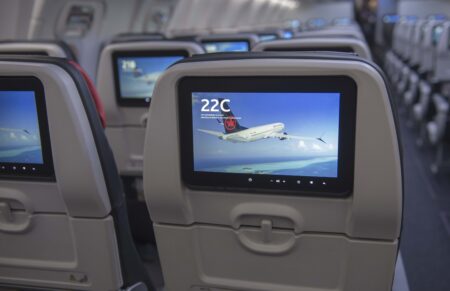
Air Canada's new Airbus A220
Unveiled to the media on January 15, 2020, the Airbus A220, despite its youth, has a long history behind it!
Air Canada ordered 45 A220-300 (the largest one) in 2016 when the aircraft was still a Bombardier CSeries.
But in 2017, when Bombardier was facing significant difficulties in selling the aircraft (mainly due to pressure from Boeing to heavily tax Mirabel’s sales to U.S. airlines), Airbus came to support the CSeries program by acquiring a 50.01% stake.
Seen by many Canadians as an abandonment of a Canadian technology flagship, however, it was the right decision for Bombardier to ally with the European aerospace giant.
Since then, Airbus has created an assembly line in the United States to circumvent U.S. rules and kept Mirabel’s one to build A220 for other companies like Air Canada. And Airbus has opened its commercial network to sell this great aircraft.
Air Canada went all out for this beautiful day at its head office in Montreal:
Comfortable for passengers
What we are particularly interested in: the comfort of passengers. As we see the rise of a low-cost airline model adding seats at the expense of passengers’ vital space, the A220 increases the comfort of every passenger!
It is a unique single-aisle aircraft, configured in rows of three and two seats. So there are far fewer “middle seats,” hated by individual travellers!
What’s more, on Swiss, which also operates the aircraft, the middle seat is slightly wider than the others. It remains to be seen if this is also the case on Air Canada!
The cabin of the A220 is very quiet: a great evolution from the Embraer currently operated by Air Canada or even the A319 and A320.
The luggage compartments are gigantic, which is a real plus for passengers travelling with only a “carry-on”!
Conquering new routes
The A220, due to its larger reach and fuel economy, allows airlines to open new routes.
This is the case with Air Canada, making it a strategic aircraft for the airline – especially at a time when the Boeing 737MAX is unusable, also strategic for the company.
For example, Air Canada has already announced the launch of new destinations such as Seattle and San Jose, California.
The airline’s maiden flight takes place on January 16th between Montreal and Calgary.
First, the new aircraft will be assigned to existing domestic and cross-border routes from Montreal and Toronto (including Ottawa, Winnipeg, Calgary, Edmonton and New York La Guardia).
The company will then tackle new markets, according to Mark Galardo, Air Canada’s Vice President of Network Planning:
The A220 will allow Air Canada to further strengthen our position on transborder and transcontinental markets and be instrumental in our continued growth. The A220 will allow us to further expand our North American network, offering customers new routes and more robust year-round schedules. When connecting through our hubs across Canada onward to international destinations, customers travelling on an A220 will benefit from a virtually seamless cabin experience offering a comparable level of service and comforts as on a widebody aircraft.
Air Canada's A220 configuration
The Air Canada Airbus A220 has 137 seats in the two-class cabin:
- 12 Business Class seats (in a 2-2 configuration)
- 125 seats in Economy Class (in a 3-2 configuration)
All passengers will have increased personal space (48 cm or 19 inches in economy class) – the widest in Air Canada’s fleet.
In business class, unlike today’s aircraft, the A220 seats offer leg support. This is appreciable for passengers, especially on domestic flights.
However, for a 6-hour transcontinental business class flight, if you have a choice with a wide-body aircraft (such as the B777 or B787), don’t hesitate. You’ll have a more comfortable seat on a widebody aircraft.
But the A220 remains a good upgrade in terms of quality and passenger comfort compared to the ageing fleet of A320 aircraft that fly daily on Air Canada transcontinental flights (such as Montreal – San Francisco).
In addition, each seat has an in-flight entertainment system with more than 1000 hours of content in 15 languages. And of course, Wi-Fi is available.
Unlike other aircraft, toilets have a comfortable size. And congratulations to Air Canada for thinking of people with reduced mobility with these two toilets that can make one by removing the partition!
Aeroplan news
This type of event is also an opportunity to meet different important leaders of the airline.
We had the opportunity to talk with Mark Nasr, Air Canada’s Vice President loyalty and e-Commerce,who is responsible for the new loyalty program.
Everything we announced to you last October is confirmed, including:
- a hybrid redemption program:
- Dynamic pricing related to the cash fare for North America, Hawaii and the Caribbean: the more expensive the tickets, the more miles it will take and vice versa. Most seats will be available with miles.
- a fixed award chart for long-haul flights and on Star Alliance airlines
- many branded credit cards
- American Express, CIBC and TD will offer more cards than there are now, and especially with exclusive benefits
- A better inventory display facilitated by the integration of the Amadeus Altéa system (currently used by 2/3 of the Star Alliance companies).
Mark returned to the integration of Air Canada into Amadeus, which was not without harm, although more than 700,000 hours of work invested in this project. Fortunately, he assures that these problems are gradually being resolved and confirms that the new loyalty program will launch in the third quarter.
Mark Nasr also provided some clarification on topics that are close to the heart of the milesopedia community:
- The changes made last summer about the mini-RTW – including the withdrawal of the possibility of a second stop – are only TEMPORARY. They were made mandatory to avoid problems when integrating with the new Amadeus system. Air Canada, therefore, wishes to reinstate this when its new program is released.
- The famous Passenger Name Record / PNR that gives passengers headaches (a different PNR according to Star Alliance airlines) will be standardized. For example, when you travel with Star Alliance partner airlines, it will soon be possible to use the PNR given by Air Canada (to check-in or to ask a question to a partner airline about your itinerary). And Air Canada should offer the option to choose your seat if you are travelling with other Star Alliance airlines!
Conclusion
We wish this new Air Canada Airbus A220 a good flight and look forward to flying on board very soon!
Don’t hesitate to come and say what you think in our facebook group or in comments!


